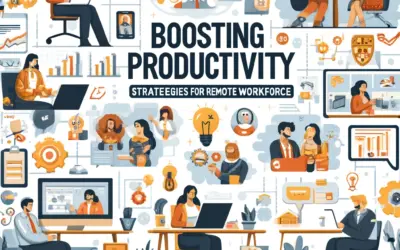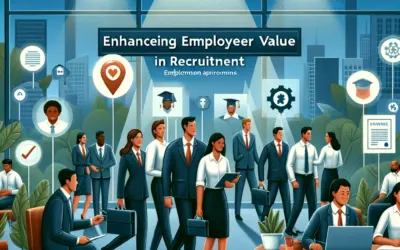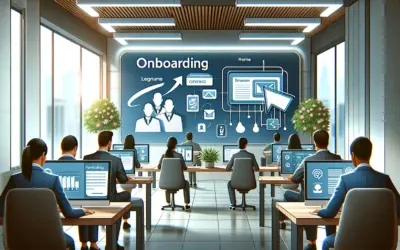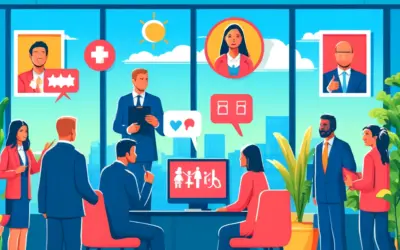The Emergence of Metaverse: A New Realm for Remote Workers
As the world embraces the digital era, remote workers are discovering an innovative playground and workspace: the Metaverse. This burgeoning virtual landscape offers more than just a place to play games or socialize; it’s reshaping how we think about work. With an increasing number of companies exploring the Metaverse, remote employees are finding that their home office can extend into a dynamic, interactive dimension.
Reinventing Collaboration and Connectivity
The Metaverse breaks down the traditional barriers of communication that remote workers often face. Through avatars, workers can interact in real-time within virtual office spaces, facilitating a sense of presence that goes beyond video calls and instant messages. This environment nurtures a communal workspace, where virtual reality (VR) and augmented reality (AR) tools enable immersive collaboration, making team projects more engaging and effective.
- Real-time collaboration in virtual workspaces
- Use of VR and AR for interactive meetings and presentations
- Creation of a virtual «presence» despite physical distance
Enhancing Professional Development and Training
The Metaverse presents unique opportunities for professional growth. With virtual training modules and simulations, remote workers can now experience hands-on learning in a controlled, risk-free environment. These immersive experiences are more impactful than traditional online courses, offering a level of engagement that accelerates skill acquisition and retention.
- Immersive learning through simulations in the Metaverse
- Improved skill acquisition and knowledge retention
- Access to global expertise without physical constraints
Building a New Workplace Culture
Company culture is vital to the success of any business, and the Metaverse is introducing new ways to cultivate a positive work environment. Through virtual team-building activities and shared social spaces, a sense of camaraderie and collaboration is maintained. The Metaverse also provides avenues for employees to express their personalities and creativity, contributing to a more diverse and inclusive workplace.
- Virtual team-building exercises and social events
- Opportunities for personal expression within the Metaverse
- Fostering diversity and inclusivity through custom avatars and spaces
The Metaverse is more than a buzzword – it’s a testament to human innovation and adaptability. As businesses and workers alike chart this unexplored territory, the promise of an enhanced remote working experience awaits. The integration of the Metaverse into our work lives heralds a new era of productivity, creativity, and connectivity for remote workers worldwide.
Key Technologies Driving Connectivity Within the Metaverse
Immersive Virtual Reality (VR)
The concept of the Metaverse hinges on the ability to immerse users in a virtual environment that feels authentic. Immersive Virtual Reality (VR) is the cornerstone technology enabling this deep dive into digital realms. By strapping on a VR headset, individuals can step into alternate worlds where they can interact with the environment and other users in a natural and intuitive way. Advanced VR devices not only track head and hand movements but also incorporate full-body tracking to enhance the sense of presence within the Metaverse.
Augmented Reality (AR) and Mixed Reality (MR)
While VR transports users to entirely virtual spaces, Augmented Reality (AR) and Mixed Reality (MR) blend digital elements with the real world. AR overlays virtual objects onto our physical environment, enriching the user’s perception with information and virtual experiences. MR goes a step further by not just overlaying, but integrating virtual objects into the real world, allowing for interactions that merge both realms. These technologies are pivotal in enabling a seamless transition between real and virtual spaces, making the Metaverse more accessible and functional in everyday life.
5G and Beyond
The Metaverse requires a robust and ultra-fast network infrastructure to support the high amount of data transfer needed for real-time interactions. 5G technology and the future advancements beyond it offer the low latency and high bandwidth necessary for the seamless operation of the Metaverse. These advanced networks ensure that users can enjoy uninterrupted connectivity, irrespective of their physical location, facilitating a cohesive and persistent online experience that is fundamental for the Metaverse to thrive.
Blockchain and Cryptocurrency
In a virtual universe where digital ownership and decentralized governance are key, Blockchain technology and Cryptocurrency form the economic backbone of the Metaverse. Blockchain provides a secure and transparent ledger for virtual transactions, allowing users to buy, sell, or trade assets with trust and ease. Cryptocurrencies are used as the medium of exchange, enabling a fluid economy that spans across various virtual worlds within the Metaverse. These digital currencies also introduce novel monetization opportunities and financial models that are instrumental in fostering a vibrant Metaverse ecosystem.
Artificial Intelligence (AI)
Artificial Intelligence (AI) plays a multifaceted role in enhancing the connectivity within the Metaverse. AI algorithms can personalize user experiences, make non-player characters (NPCs) more lifelike, and automate complex tasks within virtual environments. Through natural language processing and machine learning, AI facilitates better communication and interaction within the Metaverse, making these virtual societies more dynamic and engaging. AI’s ability to handle massive datasets in real-time is invaluable for crafting a user-centric, intelligent Metaverse.
Interoperability Standards and APIs
For the Metaverse to function as a unified entity, diverse virtual spaces need to interconnect seamlessly. Interoperability standards and Application Programming Interfaces (APIs) are the glue binding different platforms. These protocols and tools enable data sharing and functionality across the Metaverse, allowing users to move assets and retain their identity across multiple virtual experiences. Ensuring interoperability is essential for building a truly connected and expansive Metaverse.
Cloud Computing
Lastly, Cloud Computing is a fundamental technology that delivers the processing power and storage capacity necessary for the expansive worlds of the Metaverse. By leveraging the cloud, the Metaverse can offer on-demand resources, scalability, and resilience. This eliminates the need for users to have high-end hardware to participate, democratizing access and fostering inclusivity. The cloud also facilitates collaborative creation and sharing of content, which are crucial aspects of the Metaverse’s evolving landscape.
Overcoming Telework Challenges through Metaverse Solutions
The shift to telework has introduced a host of challenges that organizations are striving to overcome. The metaverse, a collective virtual shared space, offers innovative solutions to enhance remote working experiences. Let’s delve into how these metaverse solutions can help us tackle common telework difficulties.
Creating a Collaborative Virtual Workspace
One of the most significant challenges of telework is preserving the collaboration and communication that come naturally in a physical office. Virtual reality (VR) platforms within the metaverse allow for the creation of immersive, 3D virtual workspaces. These spaces are designed to simulate the dynamics of in-person interactions by offering features such as virtual meeting rooms, whiteboards, and even informal «water cooler» areas. By embodying a digital avatar, employees can interact with colleagues’ avatars just as they would in real life, maintaining those crucial social connections and teamwork dynamics.
Enhancing Employee Engagement and Productivity
Employee disengagement can be a byproduct of remote work due to isolation and a lack of structured environment. The metaverse introduces a level of engagement by integrating gamification elements, such as task completion rewards, which promote productivity. These game-like elements not only make the work more enjoyable but also provide clear indicators of progress, keeping teleworkers motivated and focused. With metaverse’s capacity to track and visualize work progress, managers can maintain oversight, while employees receive the support and recognition they need to thrive.
Fostering an Inclusive Telework Culture
Creating an inclusive culture when teams are not co-located can be challenging. However, the metaverse’s provision of customizable avatars and settings enables a diversity-friendly workplace. By allowing employees to represent themselves in ways they feel most comfortable, the metaverse nurtures an environment of inclusion and respect. Moreover, virtual spaces can also host team-building activities and cultural events, key elements that bring together diverse team members and foster unity despite geographic dispersion.
Telework may have its hurdles, but with the help of metaverse solutions, organizations can create a seamless, engaging, and inclusive remote working environment. These virtual solutions are paving the way for a new era of remote collaboration, making it possible to overcome the physical limitations of distance and recreate the dynamics of a traditional office in the digital realm.
Collaboration and Team Dynamics in the Metaverse
The metaverse is reshaping the landscape of team collaboration by introducing a new paradigm for digital interaction. The immersive nature of virtual environments offers unique opportunities for teams to come together in ways that align closer to real-life dynamics. As remote work becomes increasingly prevalent, the metaverse provides a platform where colleagues can feel more concretely connected, even from afar.
The Virtual Workspace
In the metaverse, collaborative workspaces are designed to mimic the setup of physical offices but with the added benefits of virtual enhancements. Teams can convene in custom-designed rooms that facilitate creativity, workflow, and engagement. Interactive tools and resources within these virtual spaces allow for real-time collaboration on documents, presentations, or designs, seamlessly integrating work processes and fostering a sense of shared purpose.
Enhancing Communication
Effective communication is key to any successful team dynamic, and the metaverse takes this to a new level. Avatars represent team members, allowing for body language and other non-verbal cues that are often lost in traditional online meetings. This adds depth to interactions, making conversations feel more personal and nuanced. The ability to create private or public spaces within the metaverse also enables teams to manage how and when communication takes place, ensuring discussions are optimized for productivity.
Challenges and Solutions
While the metaverse brings forward many solutions for collaboration, it is not without its challenges. Ensuring that all team members have access to the necessary technology and can comfortably navigate virtual spaces is key. Additionally, maintaining a company culture and collective ethos can be more complex in a digital realm. However, with guided onboarding and virtual team-building exercises, these hurdles can be transcended to promote a cohesive and dynamic team environment.
Overall, the metaverse opens up a new frontier for enhancing team dynamics and collaboration. As technology advances and more organizations embrace virtual platforms, the metaverse is becoming a crucial aspect of building effective, connected, and innovative teams. The integration of virtual and augmented reality into everyday workflows is not just a fleeting trend but a transformative movement that is likely to define the future of collective work.
Envisioning the Impact of Enhanced Connectivity on Future Workspaces
Boosting Productivity with Smart Office Solutions
The office environment plays a critical role in productivity. Future workspaces will capitalize on this by integrating smart office solutions powered by the Internet of Things (IoT). These smart workspaces can learn and adapt to the needs of their occupants—adjusting lighting, temperature, and even desk configurations automatically for optimum comfort and efficiency. Not only will this foster a more dynamic work environment, but it will also remove small, yet cumulatively significant, distractions that break concentration and impede workflow. With smart technology, the workspace becomes an active participant in the workday, intelligently supporting every task.
Personalized Workspaces Adapted to Individual Needs
In these technologically-enriched spaces, personalization will become key. Through enhanced connectivity, workstations will adjust to individual preferences. Imagine entering your office and having your desk adjust to your preferred height, the screen brightness calibrating to your comfort, and your essential tools brought online and ready for use. Employees will control their surroundings through simple commands or even gestures, making the workspace a seamless extension of their capabilities.
Creating a Seamless Work-Life Balance
As connectivity improves and integrates into our work environments, the line between work and life will blur in a positive way. With the ability to be ‘on’ from anywhere, professionals will have more control over their schedules and work sites. Enhanced connectivity offers employees the freedom to work from wherever they are most productive, whether that’s at home, in a local co-working space, or at a coffee shop. This flexibility can lead to a healthier work-life balance—something previously out of reach for many. It’s a future where one can transition smoothly between roles without the restrictions of traditional office boundaries. The workspace of tomorrow promises to be more than just a place to work; it will be a conduit for a richer, more integrated life experience.













0 comentarios